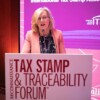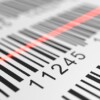
Interview with LEONHARD KURZ
2 Nov 2023 | Interviews, Press Releases
This month, we have a new entry in our ongoing interview series investigating the experiences of International Tax Stamp Association members, diving into their personal perspectives on the tax industry, today’s challenges and opportunities, and tomorrow’s potential advances.

Thomas Brücklmeier.
Our ninth interview is with Thomas Brücklmeier, Business Development Manager at LEONHARD KURZ Stiftung & Co KG. He has a background of 25 years in the security printing industry, starting out in bank card manufacturing and personalisation before moving on to ID documents, visas, passports and tax stamps.
Q: Please would you introduce KURZ
A: LEONHARD KURZ was founded more than 120 years ago, developing its original gold plating business into one that creates surface treatment techniques giving the appearance of gold. Recognising the greater potential for applications in other fields, the company shifted focus to surface enhancement and protection, ultimately becoming a world market leader in hologram technology. With more than 5,500 employees, it contributes to products including banknotes, passports, ID documents, brand protection and – of course – tax stamps.
Q: What makes your company stand out?
A: As a family-owned business, LEONHARD KURZ maintains a strong sense of tradition, values, and long-term commitment to its customers and employees. The family is strong and actively involved in the company’s operations, taking a hands-on approach with the goal of keeping standards and customer satisfaction high. With KURZ’s extensive research and development efforts, the company also continues to push the boundaries of hologram technology, offering state of the art security, providing authentication on multiple levels.
Q: What role does your company play in the tax stamp industry?
A: This depends on the requirements of our customers. For tax authorities, KURZ offers turnkey solutions for tax stamps, comprising physical stamps, application machines and TRUSTCODE®: a complete software system offering comprehensive reporting.
For security printers, KURZ provides holographic foils and our new TRUSTSEAL® paper with embedded high end optical security elements. We also supply high security products used for banknotes, ID documents and credit cards.
Tax stamp products are manufactured in a secure environment under high quality standards, and we have a global sales and support network, allowing us to serve our customers all over the world in a timely manner.
Q: What do you think is the most interesting aspect of tax stamps and/or the industry?
A: More and more governments recognise the benefits that tax stamps provide in terms of government tax revenue, leading to the increasing importance of tax stamp programmes worldwide. The physical and digital authentication features developed for tax stamps help to reduce grey market activity by serving as proof of originality.
Q: What changes have you seen to the tax stamp industry during your time working in it?
A: In recent years, the industry has undergone significant developments to expand revenue collection. The integration of digital components ensures transparency with regard to quantities of goods moving in the market. Track and trace systems can monitor the movement of goods, and mobile applications empower officers with real-time access to tax stamp data.
Another important aspect concerns the state’s duty of care. Through secure features such as QR codes integrated into tax stamps, the public now has the opportunity to verify the authenticity of products, empowering them to protect themselves from the potential financial and health consequences of illegitimate products. This is also raising the profile of tax stamps among the general public.
Q: What changes do you envisage happening within the industry in future?
A: In my opinion, more and more products will carry tax stamps. That will increase the variety of application processes for wet glue and pressure sensitive labels as well as direct marking.
The integration of digital components at the item level will also become more and more important, and the industry must be prepared for this. These unique identifiers, eg. individual barcodes and numbers, serve as a basis for key data management features, such as track and trace functionality.
Q: What is one change to tax stamps or the industry you would like to see?
A: More countries should launch tax stamp programmes in line with their current technical capabilities. This would bring added value in the form of tax revenue, transparency, prevention of illicit trade and improved duty of care to the public.
Countries where digital infrastructure is still under development can add value by focusing on optical security elements such as holograms, which allow both inspectors and members of the public to verify genuine tax stamps.
Q: What do you see as the main challenges within the industry today?
A: The greatest challenge is the evolution of tax stamps themselves. Due to the ongoing development of digital components, revenue agencies and the tax stamp industry have to be prepared to put these developments into effect.
Beyond that, I would add that the upfront investment required to implement tax stamp programmes often represents a high hurdle for relevant authorities.
Q: Why do you think the development of standards is important for the industry?
A: Based on the ongoing developments of physical and digital products for the tax stamp industry, standards for the implementation of tax stamp programmes should be made mandatory in future. A successful example of how standards can assist is ISO 22382:2018 – the ‘tax stamp standard’ – which states: ‘ISO standards provide a strong basis for the development of national and international regulation, helping save time and reduce barriers to international trade’.








